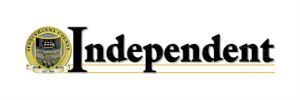Beyond the logistics of setting up hybrid educational models and establishing COVID-19 safety policies and protocols, local school districts are facing additional challenges – most attributed to changing or evolving guidance from the Pennsylvania Dept. of Education and the state Dept. of Health.
“I do understand they are developing guidance on the fly, just as we have been trying to develop plans to re-open our schools, but it still has been difficult to manage the continuous changes and keep all of our stakeholders within our school community up to date and informed,” said Blue Ridge Superintendent Matthew Button.
Elk Lake Superintendent Dr. Ken Cuomo agreed, “The ever-changing mandates from DOH and PDE (are) requiring constant changes in reopening plans.”
And Susquehanna Community Superintendent Peter Supko is also feeling the pressure. He said, “The recommendations from DOH/PDE released the second week of August (Low, Moderate, Substantial risk- based on incidence rate) really put us in a precarious position once there was an increase in the county positive cases.
“Therefore we needed to change to a hybrid learning model because there were more than 10 positive cases for the week of August 14-21. I could have waited to see the trend as recommended but that would have put us two days from opening school. Not ideal with only 10 days and sure wouldn’t have been with just a few days’ notice.”
Cuomo said that he feels state decisions seem to reflect the situations and positions of larger metropolitan areas, rather than allowing for local decision making.
“Rural and small schools are struggling financially already. Decisions like the most recent regarding mandating of face coverings regardless of social distancing are bankrupting rural and small schools as a result of parents moving students to state approved, but educationally failing cyber charter schools,” Cuomo offered.
Rep Tina Pickett, (R-110th) also weighed in on the state’s masking mandate issued last week, sending a letter to the secretaries of Health and education requesting more consistent guidance for school leaders as they prepare for the start of the new academic year and advocating for local control.
The letter was co-signed by 41 of Pickett’s colleagues in the House of Representatives, including Majority Leader Kerry Benninghoff (R-Centre/Mifflin).
“This mandate is not what our children, parents and school officials needed when looking to the administration for consistency and certainty in reopening for in-person learning,” wrote Pickett. “For months, both lawmakers and school officials have asked for guidance on how to reopen safely. Instead, your departments have issued conflicting and contradictory guidance and mandates, often late in the stages of preparation.”
The mandate requires that students returning to in-person learning wear a mask at all times with limited exceptions. Schools may allow students to remove face coverings when eating or drinking when spaced at least six feet apart; when wearing a face covering creates an unsafe condition in which to operate equipment or execute a task; or when at least six feet apart during “face-covering breaks” of up to 10 minutes.
“Moving forward, we request that any guidance on reopening prioritize local control, reopening schools to in-person education, and clarity and certainty for school leaders,” Pickett added. “We trust you will work with us – and not against us – in attaining these shared goals.”
Some parents have indicated to districts that they are wary of the masking mandate in place regardless of social distancing plans already put in place by the districts.
Cuomo said, “The excuse used to support the mandate by PDE and DOH for all students to wear face coverings was to be in alignment with CDC guidelines. The CDC guidelines (not mandates) have been in place for two months. Why, two months later did this mandate get put in place? This decision was made nine days before our students are scheduled to start school.
“We put a great deal of work into approving a hybrid reopening plan in order to create social distancing and therefore not require students to have to wear face coverings in most classes. The day after this most recent face covering mandate, seven more students pulled out of school and moved either to the District’s cyber or another cyber-charter program.”
Button said that as of Aug. 17, 31 students had enrolled into the BRSD Virtual Academy/VLN; and five transferred to a commercial cyber program. However, the Blue Ridge district has seen a decrease in those enrolled in commercial cyber programs from 37 to 31; and five students have transferred to a homeschool program, according to the superintendent.
At the end of the 2019-20 school year, 16 Elk Lake students were enrolled in the district’s remote learning program, called Warrior Academy, also known as VLN. According to Cuomo, as of Aug. 20, 55 students were enrolled for the year, at a cost of $4,500 per student.
Last year, about 38 Elk Lake students were homeschooled, and as of Aug. 20, that number has increased to 65, Cuomo reported.
“This is revenue that was counted on in the spring when the budget was approved that will not be realized,” he said.
Cuomo continued, “We budgeted $100,000 for students in our own cyber program for the 2020-21 school year. The numbers on Aug. 20 will result in a bill of $247,000. Due to the new face covering update, this will likely increase. We have not received enrollment numbers for all of the State cyber charter schools at this time. However, the cost to the school district and taxpayer per student is $14,573.07 for a regular education student and $32,693.32 for a special education student. This proves, in spite of false advertising, cyber charter schools are not free. As a matter of fact, for a regular education student the cost is (three times) more and for a special education student the cost is 7.3 times more.
“The result of the increased participation in the District cyber program, State approved cyber charter schools and lost revenue to homeshooling will be well over $500,000,” Cuomo said. He also delivered the grim numbers to the school board at last week’s meeting.
Susquehanna Community, which will see students heading back to class this week, has continued to see requests from parents and students for information on alternative options of homeschooling, commercial cyber-charter, and the district’s VLN cyber program.
“No matter the choice in cyber options it will significantly affect our budget and the fund balance,” Supko said.
Button said Blue Ridge had budgeted $580,000 for the 2020-21 cyber enrollment costs. “But this could increase even more, depending on what happens with COVID this Fall. We have been well aware for many years that there is an absolute need for cyber funding reform,” Button said
“I know myself and my colleagues within the county have had many conversations with our local legislators and with public education lobbying organizations about the negative impact cyber schools have on public schools. We all know cyber schools are not free, are funded directly from the public school districts in Pennsylvania, and that cyber schools have significantly underperformed compared to our school district.”






Be the first to comment on "Local school districts feeling impacts of PA’s COVID-19 mandates"